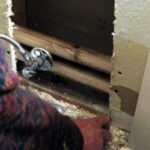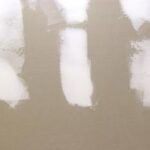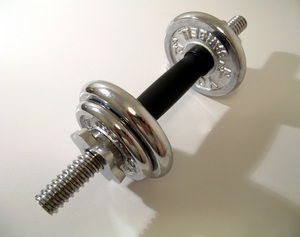Painting paneling can help you avoid costly renovation work while giving the interior of your home a completely different appearance.
Prepping the Area
Painting paneling requires some intense prep work before breaking out the brushes. How much work will depend on whether or not you appreciate the texture of the paneling or would prefer a wall that mimics drywall. If you like the texture of the walls, start your prep work by filling any holes with joint compound. Then, using sandpaper or an electric sander, smooth away any rough spots and lightly sand the entire area to be painted.
Note: For large areas, buying and using a deglosser instead of sanding can often save time. If you do decide to use a deglosser instead of sanding, be sure to wear a mask and gloves and follow the manufacturer’s instructions carefully.
If you would like to cover the texture of the wall before painting paneling, the steps are slightly different.
Prep Step #1: Begin by lightly sanding the entire area to be painted.
Prep Step #2: Add a couple of coats of an oil based bonding primer to prepare the wall. Oil based primers are often difficult to clean out of brushes: consider using disposable items for this step.
Prep Step #3: Start filling in any grooves between panels with joint compound.
Prep Step #4: Over each filled groove while the joint compound is still wet, place a piece of mesh drywall tape. This will add stability to the patches, which may pop out over time without this step.
Prep Step #5: Use a paint roller with a thick nape to apply joint compound over all of the paneling. If the joint compound is too thick, you can thin it with some water. Plan on doing several coats of joint compound, allowing drying time between each coat. As the coats increase, the texture should become more even.
Prep Step #6: Use sandpaper or an electric sander to further smooth the area if needed before painting paneling.
Painting Paneling In Two Quick Steps
Once the prep work is complete, you can begin painting paneling.
Painting Paneling Step #1: Use a oil based bonding primer to cover the area. Plan on using two thin coats and allow time for drying before continuing. If you have not covered the grooves in the panels, you may have to use a brush to cover those areas as well as cut in around windows and baseboards. If the paneling is covered with joint compound, a bonding primer may not be required.
Painting Paneling Step #2: Use a high quality paint to cover the primer. Once again, plan on applying at least two coats for an even coverage and good finish.
Final Considerations
Painting paneling is a great technique for original interiors, but it may not be necessary for older homes. Some homes had panels installed as part of a renovation. In these cases, the drywall is often behind the panels, and often in good condition. Removing the panels may be easier than painting paneling. If you have high quality wood panels, you should also consider carefully before painting paneling.



